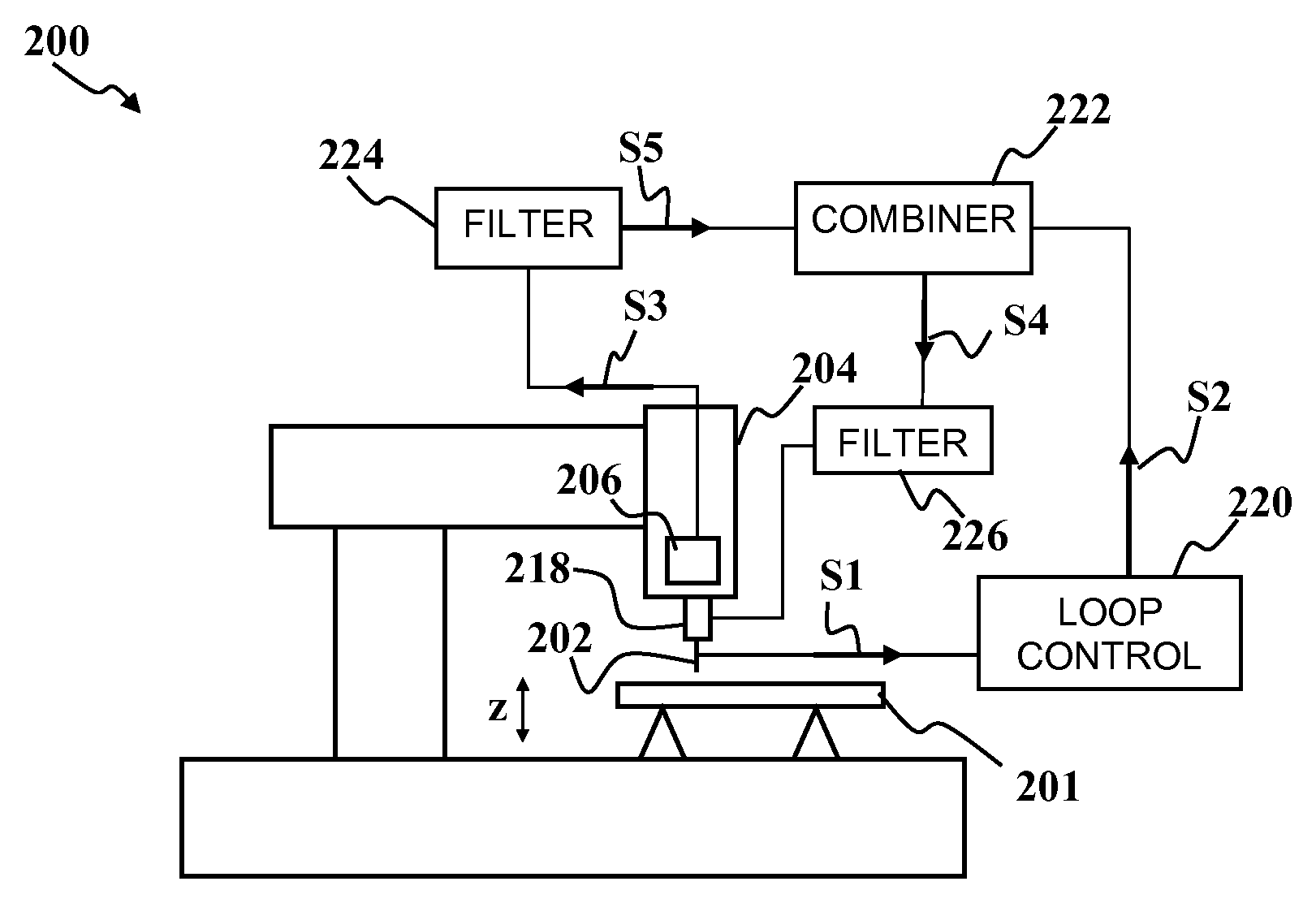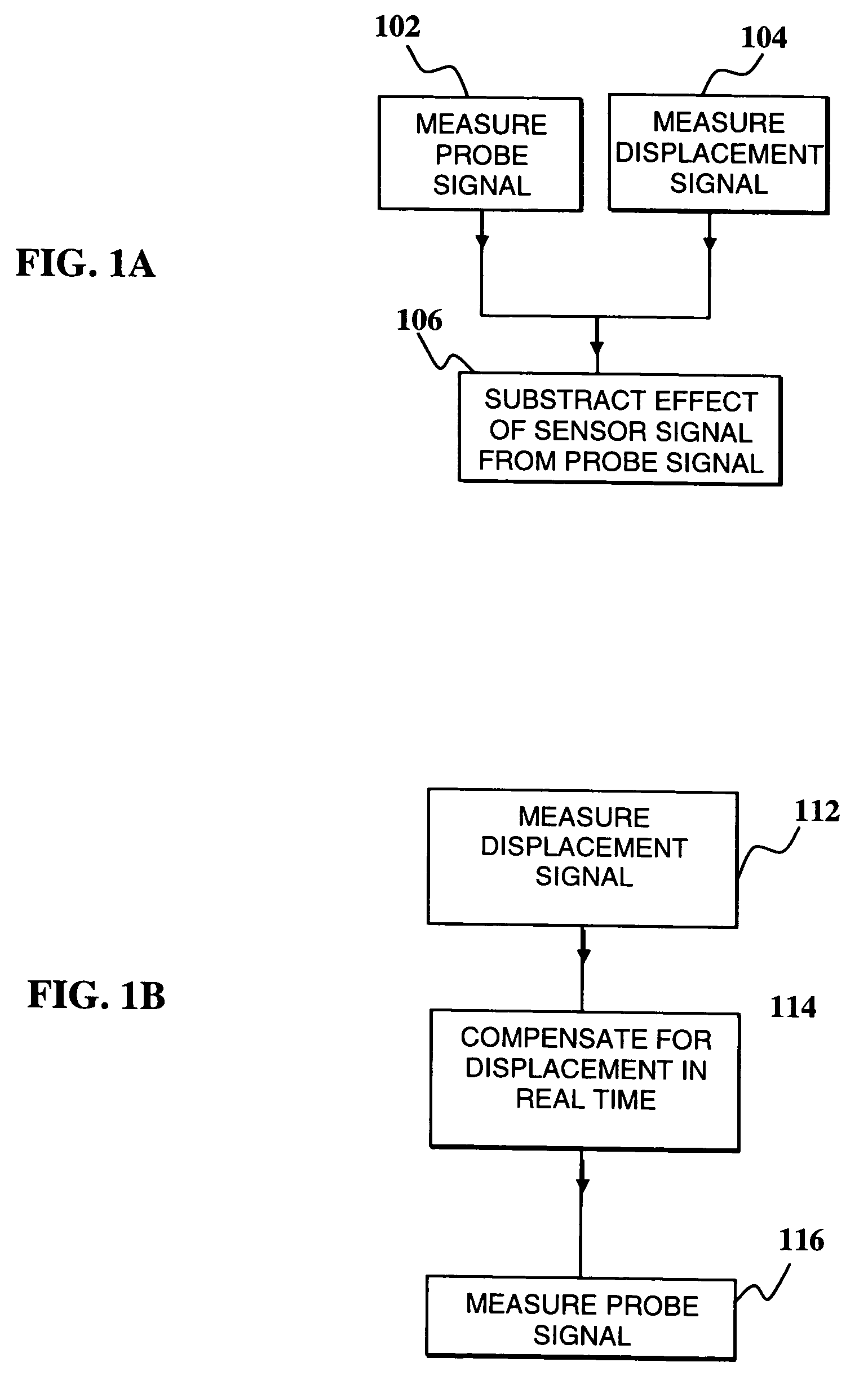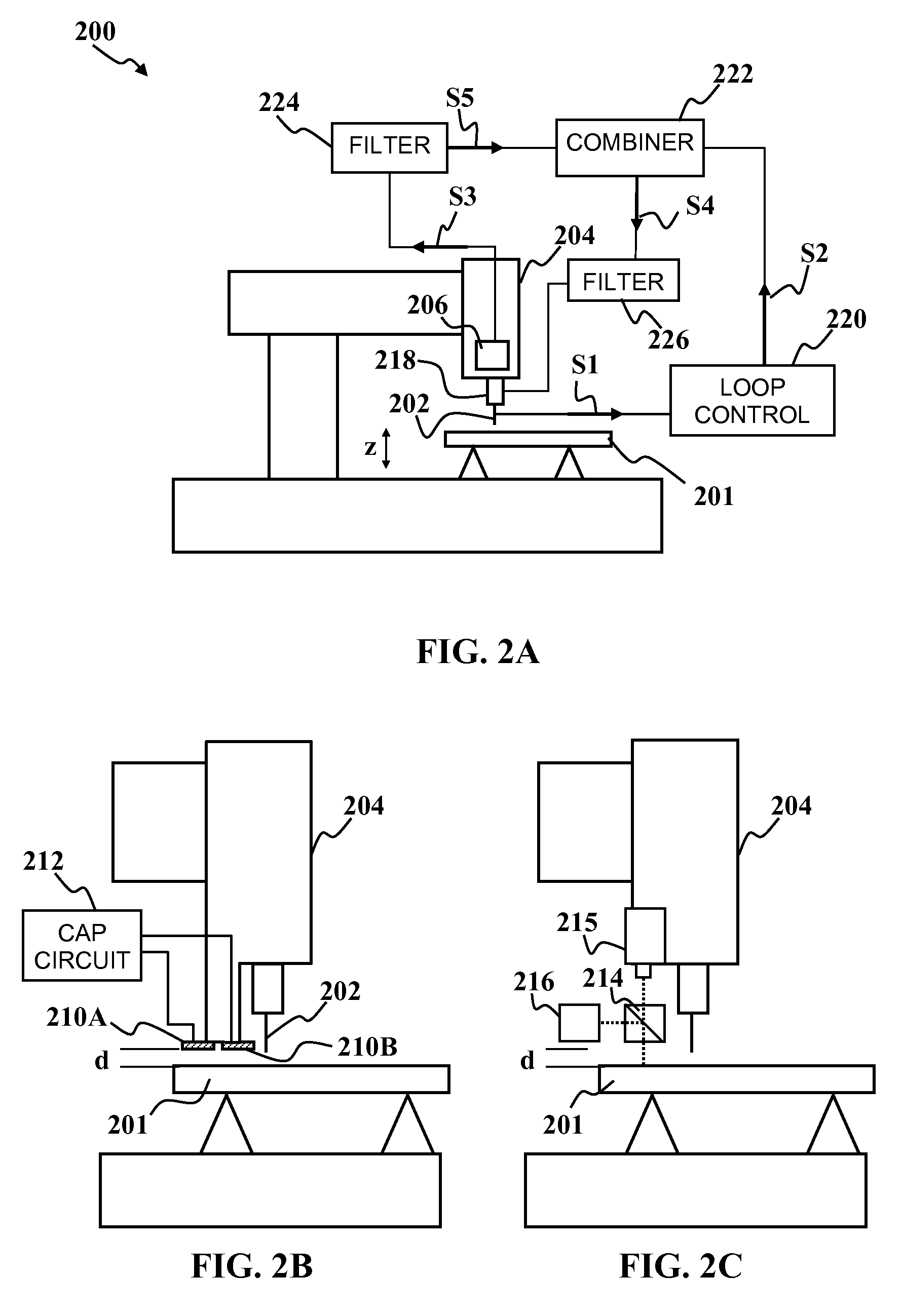Direct relative motion measurement for vibration induced noise and drift cancellation
a technology of relative motion and noise cancellation, applied in the field of surface analysis, can solve problems such as more difficult correction and thus limited
- Summary
- Abstract
- Description
- Claims
- Application Information
AI Technical Summary
Benefits of technology
Problems solved by technology
Method used
Image
Examples
Embodiment Construction
[0014]Although the following detailed description contains many specific details for the purposes of illustration, anyone of ordinary skill in the art will appreciate that many variations and alterations to the following details are within the scope of the invention. Accordingly, the exemplary embodiments of the invention described below are set forth without any loss of generality to, and without imposing limitations upon, the claimed invention.
INTRODUCTION
[0015]In a scanning probe surface analysis system, the signal from the probe depends on the relative distance between the probe and the surface under analysis. The probe is usually mounted to a scanning head that is, in turn, mounted to a microscope table through supports that suspend the scanning head over the sample. In a system like that described in U.S. Pat. No. 6,308,557, the vibration sensor is located on the microscope table. Unfortunately, although vibrations of the microscope table have an effect on the distance between...
PUM
 Login to View More
Login to View More Abstract
Description
Claims
Application Information
 Login to View More
Login to View More - R&D
- Intellectual Property
- Life Sciences
- Materials
- Tech Scout
- Unparalleled Data Quality
- Higher Quality Content
- 60% Fewer Hallucinations
Browse by: Latest US Patents, China's latest patents, Technical Efficacy Thesaurus, Application Domain, Technology Topic, Popular Technical Reports.
© 2025 PatSnap. All rights reserved.Legal|Privacy policy|Modern Slavery Act Transparency Statement|Sitemap|About US| Contact US: help@patsnap.com



